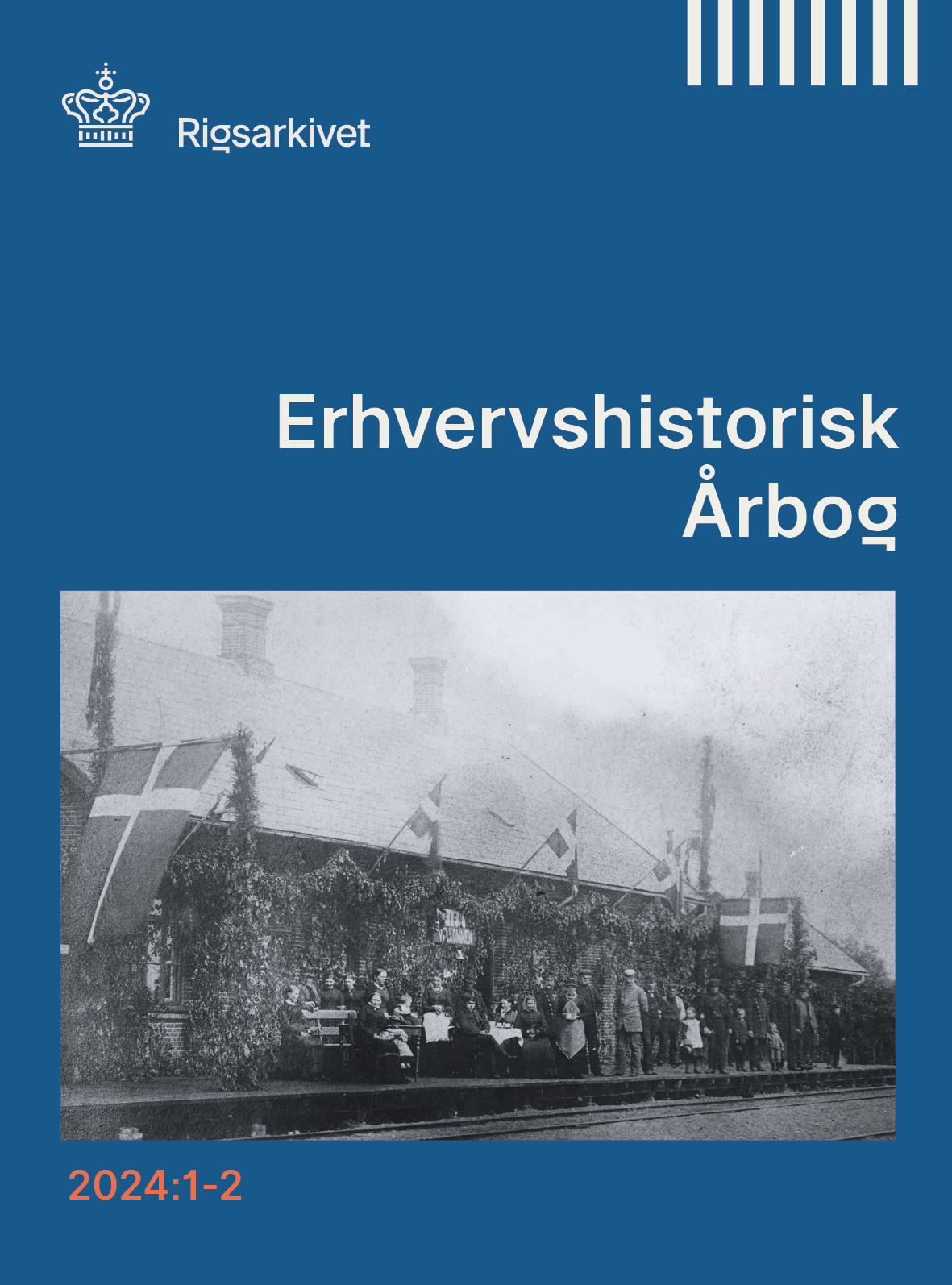Udviklingen i Vejen 1862-1874 – drivkræfterne bag den sydjyske stationsby
Resumé
I denne artikel udfordres den lokale grundfortælling om Johannes Lauridsen som ”grundlægger” af den sydjyske stationsby Vejen. Der sættes fokus på væsentlige faktorer mellem 1862 og 1874, fra næringslovens ikrafttræden til stationens etablering, altså før 1878, hvor Lauridsen påbegyndte industrielle virksomheder. Det handler om grundstrukturer som geografi, herunder som trafikalt knudepunkt i grænselandet efter 1864, og om agrare forhold som især jord af høj bonitet. Det gav grobund for både større landbrug med driftige gårdmænd og en lang række håndværkere, der servicerede det store opland. Gennem en prosopografisk undersøgelse af håndværkerforeningens stiftende medlemmer i 1872 vises det, at en række af håndværkerne var tilflyttere til Vejen, der således havde en stor tiltrækningskraft. Beboerne i Vejen har også æren af selve stationens placering lige syd for Vejen by i stedet for som oprindeligt planlagt ved Andst Bro i sognets østlige del. De stod bag et andragende i 1871, der fik solid opbakning i sognet. En prosopografisk analyse af de underskrivende viser, at der bl.a. var tale om en gruppe af større gårdejere, der i forvejen var engageret i sognets anliggender som sognerådsudvalg, skolekommission, sparekasse og brugsforening.
---
The development in Vejen 1862-1874 – driving forces behind the railway town in the south of Jutland
This article seeks to challenge the local narrative that claims Johannes Lauridsen is the “founder” of the railway town Vejen in the south of Jutland. The implementation of the Trade Act in 1862 and the establishment of the railway station in Vejen in 1874 marks the temporal scope of the article, all of which occurred before the year 1878 where Lauridsen started his industrial businesses in Vejen. In the years 1862 to 1874 factors such as geography, including Vejen’s role as a traffic center in the Danish border region after the war 1864, and agrarian conditions, such as soil of high quality, are the focus of the investigation. This led to larger farms with industrious farmers and many craftsmen that served Vejen’s surrounding areas. A prosopographical analysis of the founding members of the local craftsmen’s’ guild in 1872 shows that a significant number of the craftsmen were newcomers to Vejen, which shows the attractiveness of the town. The location of the railway station just south of Vejen instead of the planned location by Andst Bro in the eastern part of the parish can be attributed to the people of Vejen. In 1871, they wrote a petition, which received significant support in the parish. A prosopographical analysis of the people who signed the petition shows that it was a group of prominent farmers that were already involved in the affairs of the parish such as the parish council, the school committee, the savings bank and the consumer cooperative.
Downloads
Publiceret
Citation/Eksport
Nummer
Sektion
Licens
Ophavsret til artikler publiceret i Erhvervshistorisk Årbog er fastlagt i henhold til den modelaftale, License to publish, som UBVA har offentliggjort under rubrikken Ophavsret og forskningspublicering. Indsendelse af en artikel til Erhvervshistorisk Årbog indebærer en accept af dette. Modelaftalen kan findes ved hjælp af dette link: http://www.ubva.dk/Forside





